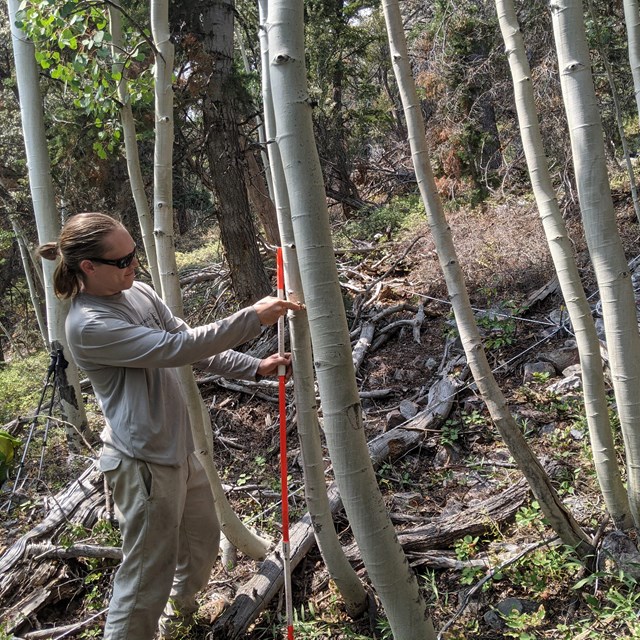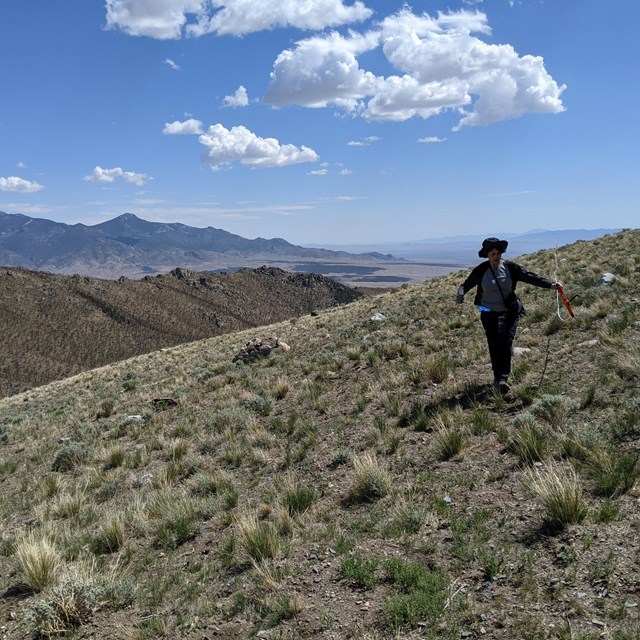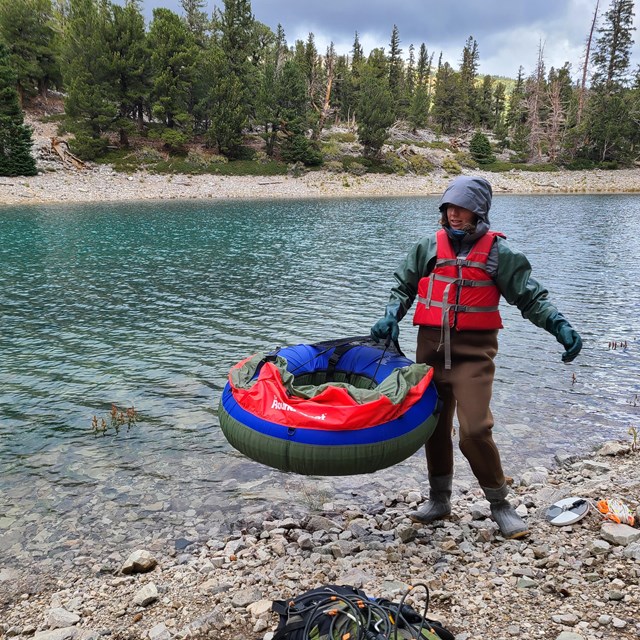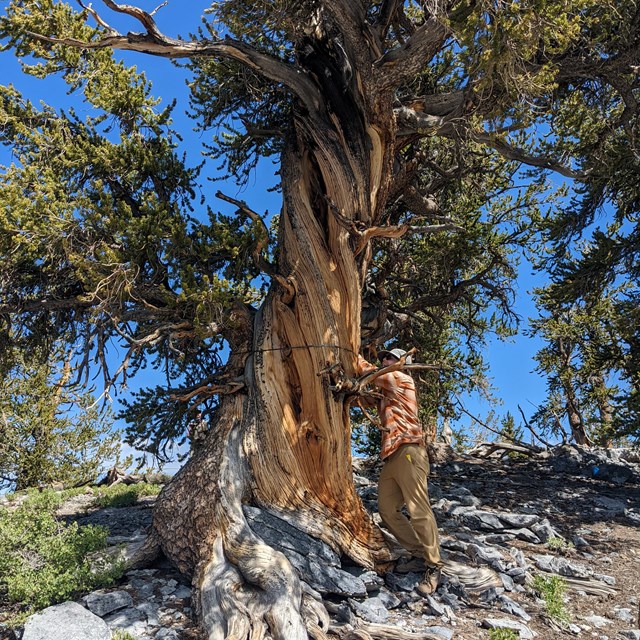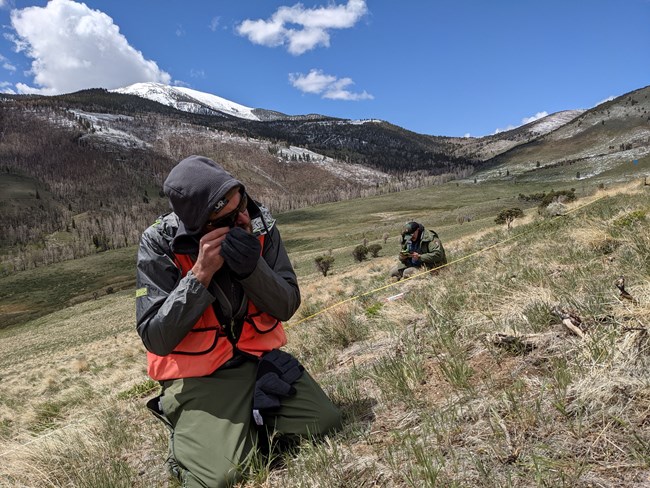
NPS / Vianey Murphy Park staff need to know how park ecosystems change over time, and what amount of change is normal. While they do some of the inventory and monitoring of the plants, animals, aquatic ecosystems, caves, and more, they cannot do it all on their own. Like a physician monitoring a patient's heartbeat and blood pressure, scientists with the National Park Service Mojave Desert Network collect long-term data on Great Basin National Park's “vital signs.” Often working with park staff, they monitor key resources, like bats, streams and lakes, integrated upland vegetation, white pines, and aspen. Then they analyze the results and report them to park managers. Knowing how key resources are changing can provide managers with early warning of potential problems. It can also help them to make better decisions and plan more effectively. Studying park vital signs is only part of the picture. Scientific research is also conducted by park staff, other state and federal scientists, university professors and students, and independent researchers. Because many parks prohibit activities that occur elsewhere, scientists can use the parks as areas for determining the effects of these activities where they do occur. Especially in the American West, national park lands often serve as the best model for what a relatively undisturbed landscape looks like. Learn more about monitoring projects
|
Last updated: December 6, 2023

